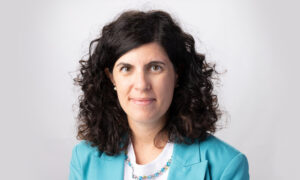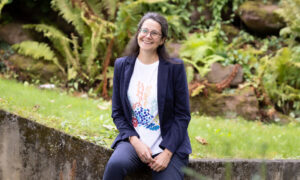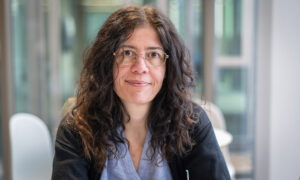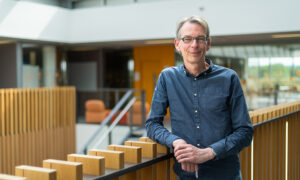
We are EMBL: Rory Bufacchi on scavenging data
Rory Bufacchi talks about the excitement of finding new understanding from existing data and developing computational models to describe living systems
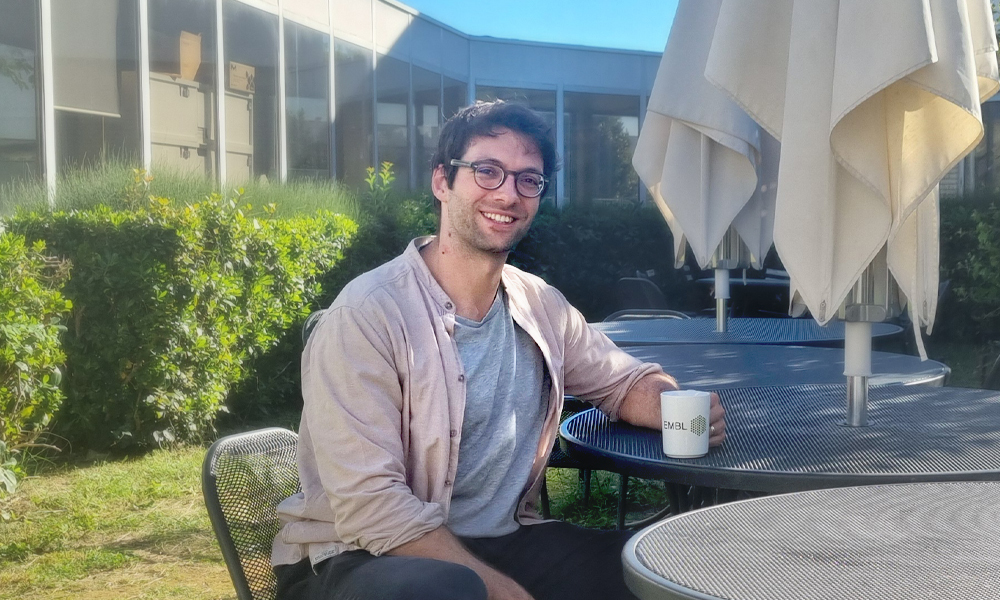
Choosing a career is never straightforward. As you grow up, a wide range of interests can pull you in apparently opposite directions.
But sometimes, without even realising it, you end up in a place that weaves all those interests together.
This is what happened to Rory Bufacchi, who recently joined EMBL Rome as Senior Research Scientist and will lead a project in computational neuroscience.
Torn between physics, biology, psychology, and artificial intelligence, Rory chose to study physics. During his master’s degree, a few courses in molecular biophysics sparked his interest in formalising the physics of living systems. This led him to pursue a PhD in modelling biological complexity at UCL in London, where he found himself working at the interface of a computational lab and a biological research group. However, it was during his postdoctoral stints in neuroscience — first in Italy, then in Shanghai, China — that he felt he was finally putting the puzzle pieces together, being part of something larger than each individual component.
We spoke to Bufacchi about his research, integrating theoretical and experimental neuroscience, and his plans for the future.
What is your research expertise?
During my PhD and postdocs, I developed my expertise in modelling behaviour. I initially worked on human behaviour, trying to extract a mathematical description of how humans should respond in certain environments to achieve some idealised outcome — what’s known as a normative model. Later, I expanded my work to include data from various animal species.
At the same time, I started to gather existing data from different sources, and I realised how much is out there. Scientists perform so many experiments, but often only use a fraction of the data they collect. So I ended up becoming something of a data scavenger, looking for people who were willing to share their data, or digging through old papers which hadn’t been touched in 10 or 20 years.
Why did you decide to come to EMBL Rome?
Italy is a fertile ground for computational neuroscience and related fields. The research is somehow scattered across the country, but there’s real potential here. One exciting long-term goal could be to connect the Italian potential with the European dimension.
Having grown up in different European countries, I strongly identify with the idea of building a scientific community striving toward a shared goal. So I suppose I have a natural bias towards a place like EMBL, which embodies that spirit.
Can you describe your research project?
My project aims to understand how animals adapt their behaviour to their environment through brain processes that can be described using computational models.
To achieve this, we will create computational models for a range of environments and behaviours. By changing specific parameters, we can link changes in behaviour to specific, interpretable alterations in brain structure and function.
This integrated approach combines theoretical neuroscience with experimental data to explore how adaptive behaviour emerges from neural activity. Furthermore, it can be extended to other organisms and applied across multiple biological scales, offering a broader understanding of brain–behaviour relationship.
What do you like about EMBL?
I like the possibility of doing projects that are greater than the sum of their parts.
EMBL is in a quite unique position, being able to draw together so many different people and expertise. While I like the idea of being a happy cog in a machine, there’s only so much a cog can do on its own. Together, we can do far more.
EMBL also resonates with me on a personal level. I was born in Italy, grew up in the Netherlands, and moved to London for university. London is a special place – it’s not necessarily your place, but it doesn’t feel like it’s not your place either. That’s how EMBL feels to me too, and part of what I like about it.
What is the best part of your work?
The most exciting thing for me is finding new understanding from existing data. And that’s one of the big reasons I thought coming to EMBL Rome would be exciting. While the neuroscience groups here are very relevant to what I’ve done before, I also like the idea of trying to form a bridge between neuroscience and molecular biology, and contributing to defining a language that can describe both.
How will your expertise benefit EMBL Rome?
I hope to work closely with both the neuroscience and the genomic/epigenetic groups to try and apply the language that’s been developed in computational neuroscience to other biotic or living systems. In neuroscience, we want to explain the thinking and behaviour of organisms. However, we can also see cells, organelles, or even populations of individuals thinking and behaving to some extent. They sense the environment around them and adapt in turn. In this sense, the same mathematical models can be applied at various scales of a biological system.
What kind of people will be working on your project?
I hope the project will attract researchers with computational backgrounds, as well as from other disciplines who are interested in using mathematical models to describe living systems. Positions will be available at various levels, from trainees to more senior researchers. I encourage interested applicants to visit the EMBL Rome website for more information.
What do you do in your spare time?
I used to spend a lot of time on the water, mainly rowing. Now I rather look for excuses to eat well, so I run or cycle a few times a week to balance things, and have even started venturing into racket sports.
I also enjoy gaming, especially when my wife and I get the chance to game together. Beyond that, I’m into long-distance activities, good food, and catching up with friends.
